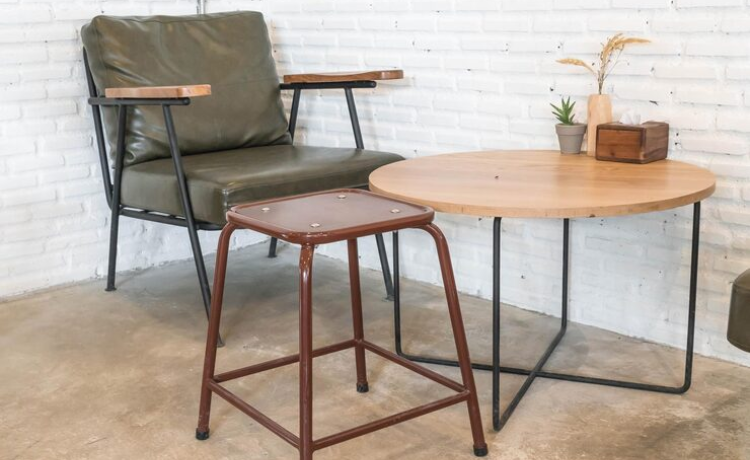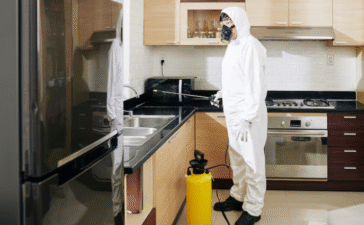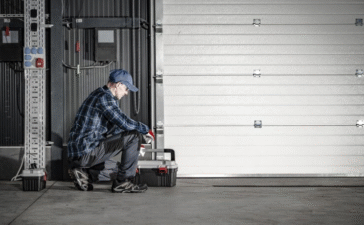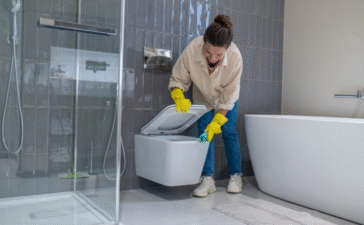Metal table legs have become a cornerstone of modern and industrial furniture design. From sleek home offices to rugged dining room tables, their blend of strength and style offers unmatched versatility. The growing trend in DIY furniture projects has further fueled their popularity, empowering homeowners and designers to create unique, personalized pieces. Choosing the right legs can transform a simple tabletop into a statement piece of modern metal furniture.
This guide provides a comprehensive look at everything you need to know about metal table legs. We’ll explore the different types, materials, and styles available. You will learn how to select the perfect legs for your project, whether you’re building a new table from scratch or upgrading an existing one. By the end, you’ll have the expert knowledge needed to make an informed decision that balances aesthetics, durability, and budget, ensuring your furniture is both beautiful and built to last.
Understanding Metal Table Legs: The Basics
To appreciate their full potential, it’s helpful to understand what sets metal table legs apart from other options and why they have become such a sought-after choice for furniture enthusiasts.
What Are Metal Table Legs?
Metal table legs are structural supports for tables made from various metals. Unlike legs made from wood or plastic, they offer a distinct combination of high tensile strength and a slender profile. This allows for designs that are both minimalist and incredibly sturdy. Their manufacturing process, which can range from simple welding to complex casting, enables a vast array of shapes and styles, from intricate vintage designs to clean, contemporary lines.
Why Choose Metal Table Legs?
There are several compelling reasons to opt for metal. Their durability is chief among them; metal legs can support immense weight without buckling or warping over time, making them ideal for heavy-duty metal legs on large dining tables or workbenches. Aesthetically, they provide a sharp, clean look that complements many interior design styles. Furthermore, metal is easy to maintain and can be finished in countless ways from raw and rustic to polished and painted to match any decor.
Common Materials Used for Metal Table Legs
The properties of a metal leg are largely determined by the material used. Steel is the most common choice, prized for its strength and affordability. It can be left raw for an industrial look or powder-coated in any color imaginable. Iron, particularly wrought or cast iron, offers a more traditional, hefty appearance often seen in vintage or rustic pieces. Aluminum is a lighter, corrosion-resistant alternative, making it suitable for both indoor and outdoor furniture. Other metals like brass or bronze are used for high-end, decorative applications where a luxurious finish is desired.
Types of Metal Table Legs
The style of a metal leg has a significant impact on the overall look of the furniture. Each type carries its own history and aesthetic appeal, fitting into different design contexts.
Hairpin Legs: Timeless and Elegant
Metal hairpin legs are a hallmark of mid-century modern design. Created by Henry Glass in 1941, their simple, slender form was designed to use minimal material while remaining strong. These legs consist of a simple rod of steel bent into a “V” shape, tapering down to the floor. Their minimalist elegance makes them a popular choice for metal legs for DIY tables, coffee tables, and sideboards, adding a light, airy feel to any piece.
Industrial Metal Legs: Rugged and Strong
Industrial style celebrates raw materials and visible construction. The industrial metal furniture often features legs made from thick steel tubing, I-beams, or cast iron. These legs are bold and substantial, often showcasing weld marks and a raw, unfinished texture. They bring a rugged, utilitarian aesthetic to dining tables, desks, and console tables, pairing exceptionally well with reclaimed wood or concrete tabletops to create a powerful statement.
Mid-century Modern Metal Table Legs
Beyond hairpin legs, the mid-century modern table legs style includes a variety of other designs characterized by clean lines, organic curves, and a lack of ornamentation. Tapered legs, sometimes with a slight outward angle, are common. These designs prioritize function and simplicity, creating a sense of understated sophistication that remains highly popular in contemporary furniture.
Straight Metal Table Legs
The most versatile and straightforward option is the straight metal leg. Often made from square or rectangular steel tubing, these legs offer a clean, contemporary look that fits seamlessly into almost any decor. Their simple design makes them a practical choice for desks, dining tables, and benches in both residential and commercial settings. Their unadorned form allows the tabletop to be the star of the show.
Custom Metal Furniture
For those with a unique vision, custom metal furniture and table legs offer limitless possibilities. A fabricator can create legs in any shape, size, or finish to match specific design requirements. This allows for complete creative freedom, whether you need legs for an unusually shaped tabletop, want a specific artistic design, or require a particular finish to match other elements in your space.
How to Choose the Right Metal Table Legs for Your Project
Selecting the right legs is a critical step that ensures your table is not only beautiful but also stable and functional. Several factors must be considered to make the best choice.
Size and Dimensions: Matching Your Table Needs
The height and width of your table legs must be proportionate to your tabletop and its intended use. Dining tables typically require legs around 28 inches tall, while coffee table legs are much shorter, usually 16-18 inches. For a desk, you’ll need metal desk legs that provide a comfortable working height. The spread or width of the legs is also important for stability, especially for large tables. As a rule of thumb, the legs should not be set too far in from the edge of the tabletop to prevent tipping.
Weight Capacity: Ensuring Stability and Durability
Always consider the weight of your tabletop and anything you plan to put on it. A heavy slab of granite or a thick hardwood tabletop requires heavy-duty metal legs made from thick-gauge steel. The product description should specify the weight capacity. For very large or heavy tables, consider a full metal table base instead of individual legs to distribute the weight more evenly and provide superior support.
Material Considerations: Which Metal Is Best for Your Table?
The choice of metal affects strength, cost, and longevity. Steel offers the best balance of strength and affordability for most projects. If the table will be used outdoors, choose aluminum or stainless steel for their natural resistance to rust. Iron provides a classic, heavy look but can be prone to rust if not properly sealed.
Metal Table Legs in Different Design Styles
Metal legs can be integrated into a wide range of interior design styles, from the raw and edgy to the sleek and sophisticated.
Industrial Design: Embracing the Raw Look
In industrial design, metal legs are a natural fit. Look for legs made from raw steel, cast iron, or blackened metal. Designs that expose bolts and weld marks enhance the utilitarian aesthetic. Pairing these legs with a thick, rustic wood slab or a polished concrete top creates a classic industrial look that is both stylish and robust.
Modern and Minimalist Interiors
For modern and minimalist spaces, the key is simplicity. Sleek, straight metal legs in a matte black, white, or brushed nickel finish work perfectly. Hairpin legs also complement this style by adding a touch of mid-century flair without creating visual clutter. The goal is to create clean lines and an uncluttered silhouette.
Vintage and Retro Styles
Metal legs are also at home in vintage and retro designs. Chromed steel legs were common in 1950s diners, while tapered hairpin legs define mid-century modern aesthetics. For an eclectic look, consider salvaging vintage metal legs or having a custom set made with an ornate, old-world design.
DIY Projects: Building Your Own Table with Metal Legs
One of the greatest appeals of metal table legs is how easily they facilitate DIY furniture projects. With a few basic tools and a good plan, you can create a high-quality table at a fraction of the cost of a store-bought piece.
Steps for DIY Table Making with Metal Legs
The process is straightforward. First, select your tabletop material. Reclaimed wood, a butcher block, or even a piece of high-quality plywood can work well. Sand and finish the tabletop as desired. Next, choose your metal legs based on the style and size of your table. Finally, attach the legs to the underside of the tabletop using the appropriate screws.
Essential Tips for DIY Enthusiasts
When working on metal legs for DIY tables, precision is key. Measure twice before drilling any holes. Ensure the legs are placed symmetrically and are perpendicular to the floor for stability. Use screws that are long enough to securely fasten the legs but not so long that they poke through the top of your table. If you are using a very hard wood, pre-drilling pilot holes will make a metal table legs installation much easier.
How to Install Metal Table Legs
Most metal table legs come with a mounting plate with pre-drilled holes. Place the leg on the underside of your tabletop and mark the hole locations with a pencil. Remove the leg and drill pilot holes at the marked spots. Reposition the leg and drive screws through the mounting plate into the tabletop. For heavier tables, consider using threaded inserts for a more secure connection.
Where to Buy Metal Table Legs
Finding the right metal table legs is easier than ever, thanks to a wide range of online and local suppliers.
Top Online Stores for Metal Table Legs
Online marketplaces like Etsy are a treasure trove for handmade and custom metal furniture legs from independent fabricators. Amazon offers a vast selection of styles and price points. For more specialized or commercial-grade options, dedicated furniture hardware suppliers like Tablelegs.com or Rockler are excellent resources.
Local Shops vs. Online Retailers
Buying from a local metal fabricator allows you to see the product in person and often get a custom piece made to your exact specifications. However, online retailers typically offer a wider selection and more competitive pricing. Consider your project’s needs if you need something standard, online is often the way to go. For a unique, custom project, a local shop may be a better partner.
Metal Table Legs Cost and Pricing: What to Expect
The price of metal table legs can vary dramatically based on several factors.
Factors Affecting the Price of Metal Table Legs
The material is the biggest cost driver; stainless steel and aluminum are generally more expensive than standard steel. The complexity of the design also plays a role in intricate or custom designs that cost more than simple, straight legs. Finally, the finish can add to the cost, with powder coating or chrome plating being more expensive than a raw or painted finish.
Affordable Metal Table Legs
For those on a budget, there are many affordable metal table legs available. Simple hairpin legs or straight steel legs are often the most cost-effective options. Look for sales on online marketplaces, and don’t be afraid to choose a raw steel finish that you can paint yourself to save money.
High-End Metal Table Legs
For a luxury project, premium options abound. Custom-designed legs from a skilled artisan, legs made from high-end materials like bronze or brass, or those with a flawless polished chrome finish fall into this category. These legs are often pieces of art in themselves and can become the focal point of a room.
Maintenance and Care of Metal Table Legs
Proper care will ensure your metal table legs look great and last a lifetime.
Cleaning and Maintaining Metal Table Legs
For most indoor metal legs, regular dusting with a soft cloth is all that’s needed. For a deeper clean, wipe them down with a damp cloth and a mild detergent, then dry them thoroughly to prevent water spots. Avoid abrasive cleaners that can scratch the finish.
Dealing with Rust and Wear
If your metal legs develop rust, it can usually be treated. For minor rust, scrub the area with steel wool. For more significant rust, you may need to sand the area down to the bare metal, then apply a rust-inhibiting primer and a fresh coat of paint or sealant. To prevent rust on outdoor furniture, choose a corrosion-resistant material or ensure your steel legs have a durable outdoor-rated powder coat finish.
Also Check: “furniture table dining“
The Future of Metal Table Legs in Interior Design
The world of metal furniture is constantly evolving, with new trends and technologies shaping what’s possible.
Emerging Trends in Metal Table Leg Designs
We are seeing a trend towards more sculptural and artistic leg designs, moving beyond simple function to become decorative elements. There’s also growing interest in mixed-material designs, combining metal with wood or acrylic. Smart furniture integration, such as legs with built-in cable management or charging ports, is another emerging trend.
Sustainability in Metal Furniture
Sustainability is a growing focus in the furniture industry. Metal is an inherently sustainable material because it is incredibly durable and can be recycled indefinitely without losing its properties. Choosing high-quality metal legs that will last for generations is a form of sustainable metal furniture consumption. Many manufacturers are also using recycled metals and eco-friendly finishing processes.
Choosing the Perfect Metal Table Legs for Your Home
Selecting the right metal table legs is about balancing function, style, and budget. By carefully considering the size of your table, the weight it needs to support, and the design aesthetic you want to achieve, you can find the perfect legs for your project. Whether you’re a seasoned DIYer or just looking to upgrade an existing piece of furniture, metal legs offer a world of possibilities. They are a testament to how simple, high-quality materials can elevate the functionality and beauty of our living spaces.
Frequently Asked Questions
What are the strongest metal table legs?
Generally, table legs made from heavy-gauge steel are the strongest. For maximum stability and weight-bearing capacity, a full metal table base or legs made from thick, welded square or rectangular tubing are excellent choices. Always check the manufacturer’s specified weight capacity.
How do I stop my metal table legs from rusting?
To prevent rust, choose a corrosion-resistant material like stainless steel or aluminum for outdoor or high-moisture environments. For standard steel legs, ensure they are sealed with a durable finish like a powder coat or a high-quality paint. If you notice any chips or scratches in the finish, touch them up promptly to prevent moisture from reaching the metal.
Can you paint metal table legs?
Yes, you can easily paint most metal table legs. For the best results, start by lightly sanding the surface to help the paint adhere. Apply a metal primer, followed by two or three thin coats of metal-appropriate paint. Spray paint often provides the smoothest finish.
What is the standard height for dining table legs?
The standard height for dining table legs is around 28 inches. This, combined with a standard tabletop thickness of 1-2 inches, results in a total table height of 29-30 inches, which is the industry standard for dining tables.
Are hairpin legs still in style?
Yes, hairpin legs remain very much in style. While they are most closely associated with mid-century modern design, their simple and elegant form allows them to work well in a variety of interiors, including minimalist, rustic, and eclectic spaces. Their timeless appeal has made them a lasting trend.
How much weight can metal table legs hold?
The weight capacity varies greatly depending on the material, design, and construction of the legs. A set of simple hairpin legs might hold a few hundred pounds, while heavy-duty industrial legs can support a thousand pounds or more. Always refer to the product specifications for the exact weight rating.












